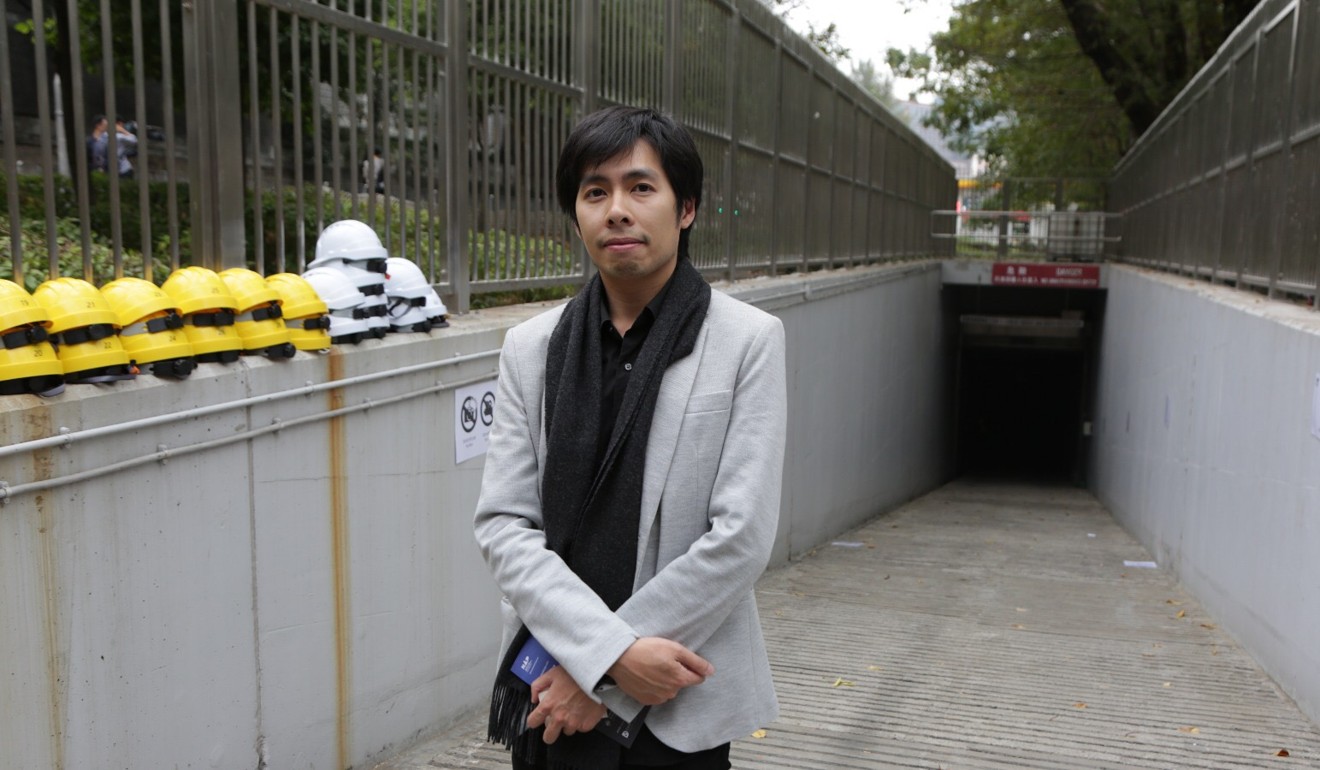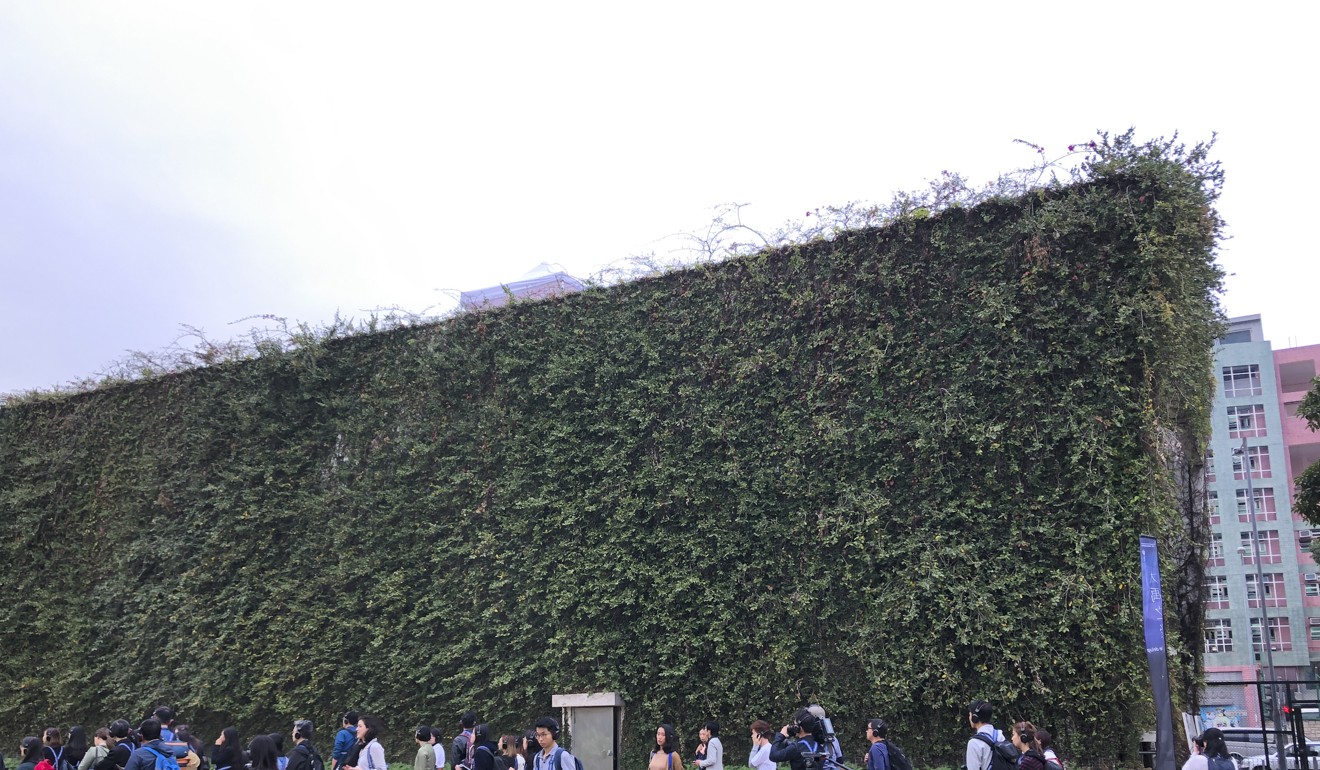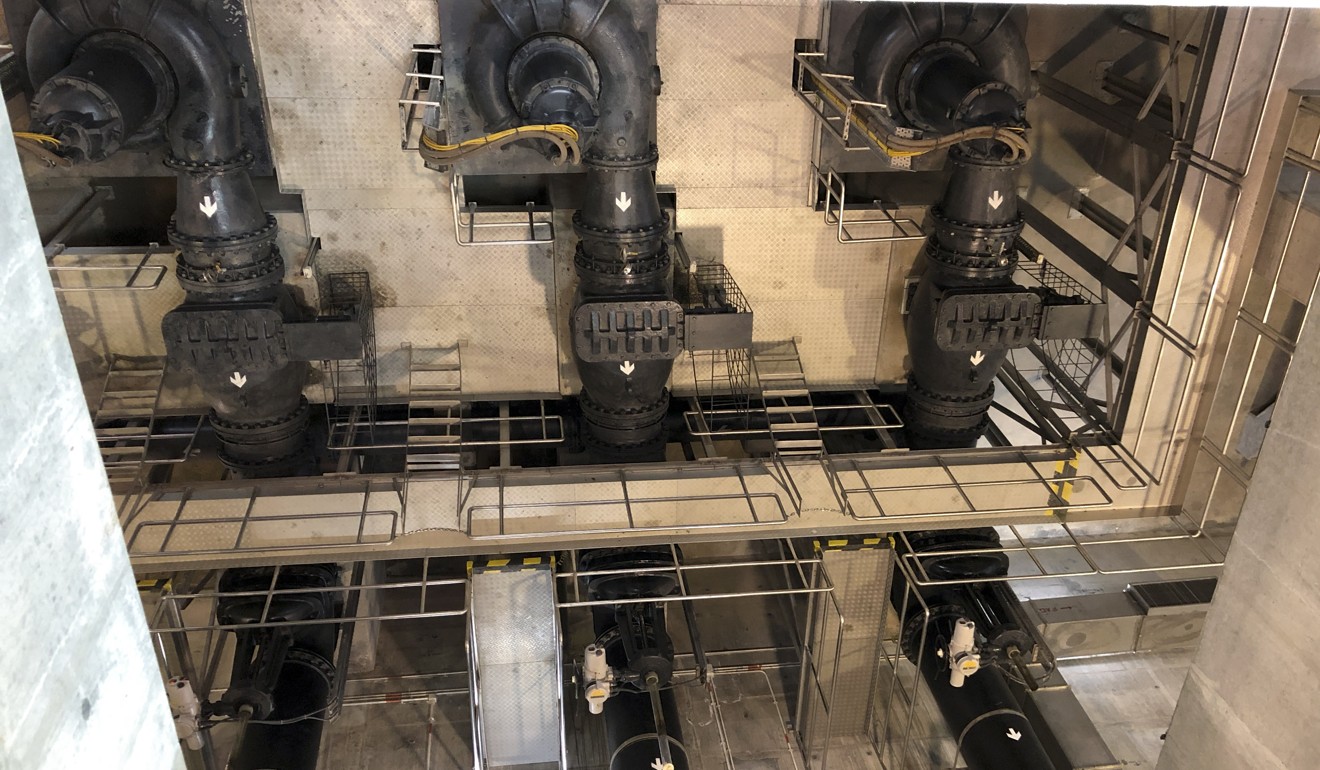
Hong Kong stormwater tank becomes art space for a month in tribute to brains behind the drains
Call it sewer genius: artist Kingsley Ng has transformed a man-made underground cavern into a multisensory experience – faint sewage smell included – that is as beautiful as it is unusual

Kingsley Ng Siu-king has transformed a malodorous underground cavern into an artistic tribute to that most mundane of urban features, the Hong Kong drain.
All this month, members of the public can join a multisensory tour of After the Deluge, the artist’s installation in the subterranean Tai Hang Tung stormwater storage tank opposite Mong Kok Stadium in the heart of urban Kowloon.
Visitors are led to the entrance while listening on headsets to meditative music composed by Hong Kong flautist Angus Lee Yi-wei. As the hubbub of Kowloon fades away, a guide holds up a miner’s lamp and leads the way down a dark, gently sloping tunnel.

The artist projects a message in Chinese on a pillar at the bottom of the slope: “Leap down at the point where the overspill weir bends.” Is this a description or an instruction? It certainly adds to the air of trepidation as one enters the pitch black tank, a man-made cavern 136 metres by 130 metres and nearly eight metres high. A faint but distinct odour of sewage doesn’t make it any more pleasant.
But all is forgiven when the show begins.
Blue lights flood the centre of the cavern as a matrix of silent fans on the ground lift and lower long ribbons of fabric in a dance that mimics the flow of water. It is a beautiful spectacle that neutralises the sense of foreboding that would normally accompany a visit to an underground tank designed to take in a huge amount of water in a flash.
Ng is a new-media artist who has a knack for using light and sound to transport the audience far from their day-to-day existence. To the Moon (2014) saw him installing fictitious habitations that had lost their connections to nature inside Jordan Valley Park, a former landfill. Twenty-five Minutes Older (2016) turned two trams into moving camera obscuras and passengers travelled through Hong Kong Island seeing distorted views of the familiar streets outside while listening to excerpts from Liu Yichang’s stream-of-consciousness novella Tête-bêche.

After the Deluge, part of the Jockey Club’s New Arts Power programme, supported by the Hong Kong Arts Development Council, began life when Ng was asked to come up with a “homecoming” project to mark his first solo exhibition in the OzAsia Festival in Adelaide, Australia, in 2016.
This is a project to praise some of Hong Kong’s unsung heroes
His decision to focus on floodwater was triggered by the existence of Adelaide and Hong Kong at climatic extremes: the former is in one of the most parched landscapes in Australia, his home city overwhelmed increasingly often by torrential rain.
The Chinese title of the project is “After the Great Yu”, a reference to an ancient Chinese ruler reputed to have diverted the Yellow River and saved large swathes of China from frequent flooding.
Some members of the audience may see a political message here, especially as participants are asked to put on either yellow or blue safety helmets – colours that coincide with those representing the activism of the city’s pro-democracy “umbrella movement” and their opponents. Was the deluge a common enemy necessary to bring communities together? And what happens afterwards?

Ng says his message is straightforward. He wants to shine a light on the underappreciated work of the Drainage Services Department, which had the foresight to begin work in 1997 on Hong Kong’s first floodwater storage tank.
It has been used over 160 times since 2004 to slow the flow into Victoria Harbour of rainwater collected by the mains drainage in Mong Kok. Busy Nathan Road has not suffered any serious flooding since, and similar tanks have been built beneath Happy Valley and Sheung Wan.

“This is a project to praise some of Hong Kong’s unsung heroes,” Ng says.
As for the nasty whiff underground, he says it is a good reminder to visitors that they shouldn’t pour “their fishball noodle soup” down drains designed to capture clean rainwater. The tour lasts around 40 minutes, but visitors will spend less than half that time inside the storage – so the slightly unpleasant smell really isn’t too much of a trial.
After the Deluge, Tai Hang Tung Stormwater Storage Tank, Sham Shui Po, Tue-Sun at allotted times, until Jan 31. Register online at: http://www.afterthedeluge.com/